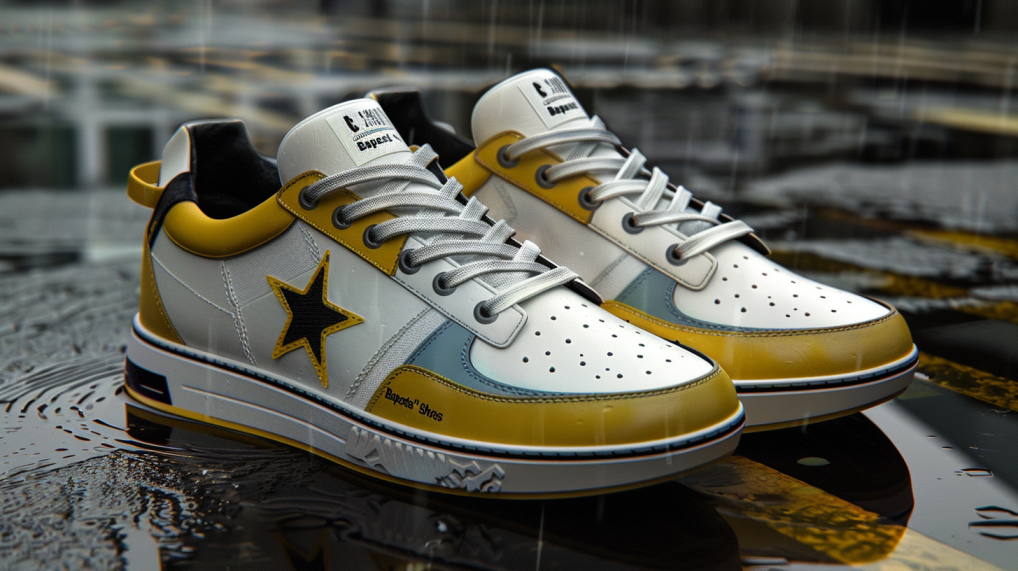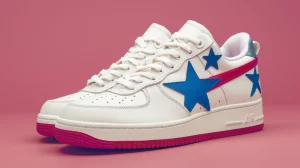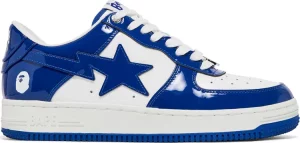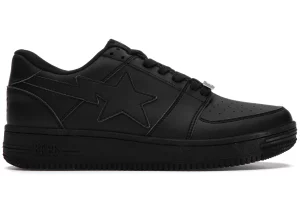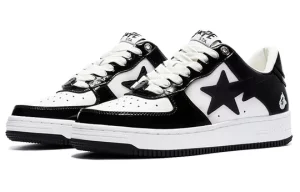Welcome to Bapesta® Shoes, your number one source for one of the most iconic sneakers in streetwear history. Originally released in 1993 as the ‘Baby MILO’ sneakers by pioneering Japanese streetwear brand A Bathing Ape® – affectionately nicknamed BAPE – Bapesta soon became a staple in hip hop fashion and urban culture. Loved by legends like Pharrell and Kanye West for their bold style and quality craftsmanship, Bapesta sneakers have remained a coveted classic for over 25 years.
At Bapesta® Shoes, we are dedicated to providing an in-depth look at the rich history and cultural impact of this legendary kick. From the origins of BAPE to the rise of Bapesta in the 2000s, we cover it all. Our goal is to be your go-to resource for everything Bapesta – from release dates and collab info to styling tips and spotlight features. Consider us your Bapesta bible!
The History of BAPE and Bapesta
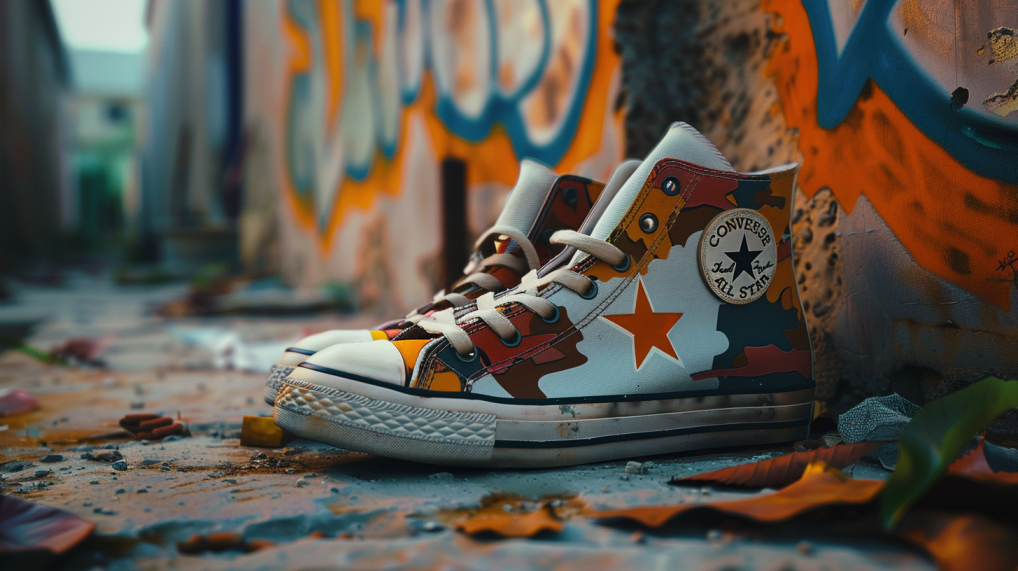
To understand the significance of Bapesta, you first need to understand the brand behind it – A Bathing Ape. Founded in 1993 by Japanese fashion designer Nigo, BAPE was created as a bold challenge to the dominance of American brands in streetwear at the time. The name itself pokes fun at the popularity of brands like Tommy Hilfiger, suggesting that even an imaginary brand called ‘A Bathing Ape’ could be successful.
Nigo created BAPE with cutting-edge urban style in mind, combining graffiti motifs, military inspiration, and pop culture references. One of BAPE’s most iconic early designs was the ‘Baby Milo’ character, a cartoonish ape that served as the brand’s mascot. Baby Milo was soon featured in BAPE’s first sneaker release in 1993 – the Bapesta.
The original Bapesta design featured the Baby Milo logo on the side panels and tongue, an iconic star mark on the outer sides, and BAPE’s signature lightning bolt on the heels. The clean, minimalist shape was inspired by Nike’s Air Force 1, with BAPE’s camo pattern becoming a signature accent. Initially released in just a few colorways, the Bapesta soon exploded in Japan before making waves in the US hip hop scene in the early 2000s.
The Rise of Bapesta in Hip Hop Fashion
Bapesta first caught the attention of American hip hop icons like Pharrell Williams in the early 2000s. Enamored by BAPE’s unique urban style and premium quality, Pharrell helped introduce Bapesta and BAPE to the Western mainstream.
Kanye West, Jay Z, and other rap superstars soon followed, wearing rare Bapesta colorways and collaborations in music videos and street style photos. Nigo himself built relationships with these celebrities, who were drawn to BAPE’s exclusivity and authenticity. Pharrell famously referred to Nigo as the ‘Steve Jobs of fashion’, high praise for the BAPE founder’s visionary approach.
The association with hip hop royalty propelled Bapesta to grail status. Finding rare coloways and styles became akin to hunting for holy sneaker grails. Bapesta was no longer just a sneaker – it was a status symbol within sneakerhead culture. Owning unique Bapestas gave credibility, with stylist June Ambrose calling the shoes ‘tickets to the VIP section’ of streetwear.
The Design Evolution of Bapesta
While remaining relatively consistent over the decades, the Bapesta has undergone some subtle design shifts that sneakerheads obsess over.
The original Bapesta had a bulky, high-cut profile with a thick outer sole. Early versions featured a large Baby Milo head logo that covered most of the outer side panels. By the early 2000s, this gradually shrunk to a smaller circular Milo head logo.
Bapesta Low styles emerged around 2002, bringing a slimmed down, lower cut look while keeping the star branding on the sides. This gave the option of a more minimal Bapesta that highlighted the iconic heel tabs and toe cap.
Patent leather and metallic Bapesta colorways dropped in the mid-2000s, adding glossy, eye-catching flair to the typically matte suede. Collaborations also brought radical reimaginings like full-print graphics or bold color blocking.
Through it all, BAPE has been careful to keep the Bapesta’s retro look and charm intact. The star logos, distinctive heel tabs, and quirky ape head branding make Bapesta one of the most identifiable and sought-after sneakers ever released.
The Collaboration Game
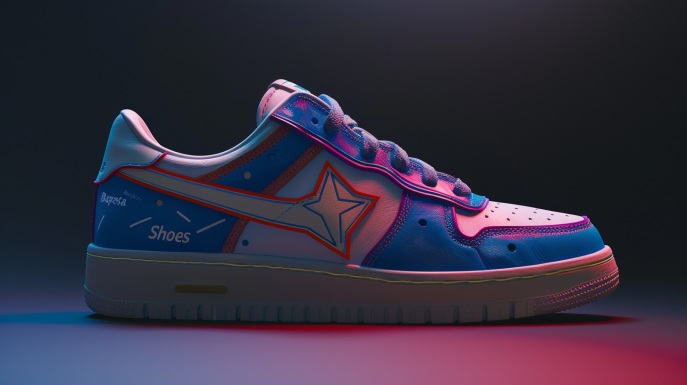
A huge part of Bapesta’s legacy is tied to its countless collaborations with other top brands and retailers. These limited edition releases take the classic Bapesta design in creative new directions, often fetching huge resale prices due to scarcity and demand.
Notable Bapesta collaborations include:
- Bapesta x Undefeated – Camo and olive military colorways with Undefeated’s iconic 5 Strike logo, released in 2008.
- Bapesta x adidas – A 2008 partnership bringing Bape camo and colors to adidas’ classic Superstar and Pro Model silhouettes.
- Bapesta x Kanye West ‘Dropout Bear’ – Featuring Kanye’s early college mascot, released to promote his debut album in 2004.
- Bapesta x Pharrell Williams – Multiple collaborations between BAPE and Pharrell’s brands like Billionaire Boys Club and Ice Cream.
- Bapesta x Kanye West ‘Glow in the Dark’ Tour Edition – Glow in the dark Bapestas made for Kanye’s 2008 tour with a distinctive spiky sole.
- Bapesta x DC Comics – Comic book inspired Bapestas including Superman, Batman, Wonder Woman and Flash versions.
- Bapesta x Mita Sneakers – Premium leather and suede colorways made for the historic Japanese retailer Mita in 2015.
- Bapesta x UNKLE – Futuristic camo-print Bapestas made with British electronic group UNKLE.
Through these and many other creative partnerings, the Bapesta has been reimagined while staying true to its streetwear roots. Collabs are a chance for Bapesta to gain new audiences and remain relevant across generations.
Why Bapesta Stands the Test of Time
In an industry where trends come and go, Bapesta has demonstrated incredible staying power – a testament to both its timeless design and illustrious heritage. Here are a few key reasons why the Bapesta remains so iconic after 25+ years:
- Unique Storytelling – The Bapesta has a defined narrative tied to BAPE’s history and connection to legends like Nigo and Pharrell. Provenance matters in sneaker culture.
- Reputation for Quality – BAPE only uses premium materials for its sneakers. Bapesta leather and suede is well-regarded for durability and aging beautifully.
- Distinctive Aesthetic – The star branding, Baby Milo logos, and heel shape make Bapesta instantly identifiable. It bridges retro appeal with modern streetwear edge.
- Association with Hip Hop Royalty – Being championed by the biggest names in hip hop cemented Bapesta’s reputation as a grail.
- Art of Collaboration – Carefully selected collabs with respected partners keep Bapesta feeling fresh and relevant across streetwear generations.
- Focus on Exclusivity – Strict distribution and production numbers maintain Bapesta’s allure of unattainability. Finding a pair still feels like joining an exclusive club.
Simply put, the Bapesta is a perfect intersection of art, culture, quality, and strategy. Its enduring cool comes from BAPE staying committed to the roots of its design, while evolving with the times. A true icon lives on.
Bapesta in the Modern Era
In recent years, Bapesta has experienced a revival thanks to a new generation discovering streetwear icons. The rise of celebrity stylist Ian Connor and hip hop stars like A$AP Rocky has put Bapesta back on the style radar. Vintage pairs now command prices in the thousands.
BAPE has also re-introduced OG colorways and improved distribution for Bapesta while still limiting quantities to control supply. This has expanded access just enough to capture new audiences. Modern streetwear and sneaker culture is increasingly obsessed with revisiting retro Grail shoes like Bapesta.
Even as streetwear has gone mainstream, Bapesta is likely to remain an enduring symbol of what’s possible when you build something with heart and authenticity. Much like Air Jordans or AF1s, we don’t expect the Bapesta craze to fade anytime soon. The key will be for BAPE to continue nurturing it through carefully planned releases and collaborations.
The Hunt for Grail Bapestas
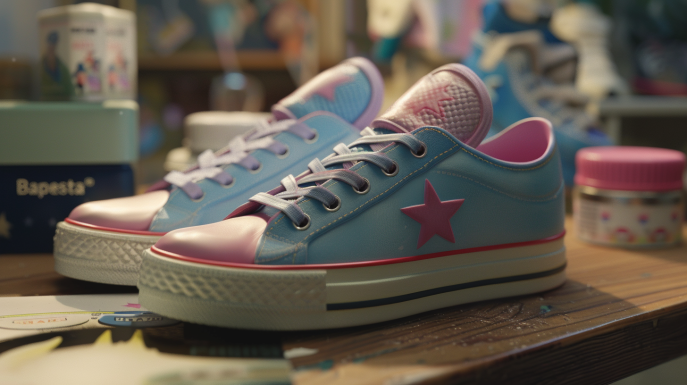
For serious Bapesta fans, the hunt never ends for those legendary, coveted releases. Grail Bapesta colorways and collabs can fetch astronomical resale prices in excess of $2000 or more for unworn pairs in the right size. Even used pairs in good condition run $500+.
Here are some of the most sought-after Bapesta Grails:
- Bapesta Brown Suede – The OG brown suede colorway from early 2000s.
- Bapesta Burgundy Suede – Rich oxblood suede, also from early 2000s.
- Bapesta Kanye Blinky Bear – Official 2004 College Dropout Bapestas, only 150 pairs made.
- Bapesta Pharrell Williams Human Race – Yellow and bright blue collab with Pharrell’s Human Race brand.
- Bapesta Tier Zero Black/White – Ultra rare black and white camo edition from 2001, believed to be only 50 pairs.
- Bapesta Murderface Black/White – Iconic black and white Bapesta worn by Pharrell himself, incredibly rare.
Finding these unicorns takes serious detective work and connections. Beyond the OG rare releases, collectors also seek out collaborative and friends & family exclusives. Patience and persistence pay off when tracking down Bapesta’s rarest treasures. The thrill of the hunt is all part of the allure.
The Future of Bapesta
If the past is any indication, Bapesta will continue evolving with streetwear culture while keeping its retro appeal alive. We can expect more inspired collabs, creative renditions of classic colorways using new materials and textures, and smartly limited releases. BAPE founder Nigo always said scarcity breeds desirability – a ethos we don’t see changing.
Bapesta is also likely to keep spreading its wings into higher fashion circles. We’ve seen respected designers like John Elliott put their spin on Bapestas through premium collabs. Even high fashion powerhouse Chanel has taken inspiration from Bapesta’s iconic side star branding. The worlds of streetwear and luxury fashion increasingly overlap, which points to more high profile Bapesta experimentation to come.
But above all else, Bapesta should stay true to the foundation Nigo built back in ’93. The ape head charm, basketball-inspired silhouette, and subtle quality details must remain or else Bapesta risks losing its identity. As long as BAPE respects the heritage while leading with innovation, Bapesta will continue to be the ultimate marriage of creativity and credibility.
We can’t wait to see what the future holds. A new generation of sneakerheads is hungry to claim their own legendary Bapesta stories. And for those who lived through the emergence of this icon, Bapesta will always represent something more profound – a reminder of when streetwear history was made.

